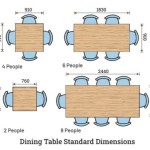Value Of Antique Drop Leaf Table And Chairs Set
Antique drop leaf table and chair sets represent a captivating intersection of functionality, craftsmanship, and historical significance. These sets, characterized by their tables featuring hinged leaves that can be lowered to save space, were particularly popular during periods when homes were smaller and adaptability was highly valued. The accompanying chairs, often reflecting the stylistic trends of the table's era, complete the ensemble, creating a versatile and aesthetically pleasing addition to any interior.
Determining the value of an antique drop leaf table and chair set requires careful consideration of several factors, each contributing to the overall worth of the pieces. These factors range from the age and origin of the set to its condition and stylistic attributes. Understanding these elements allows potential buyers and sellers alike to make informed decisions, ensuring fair pricing and preserving the historical importance of these valuable antiques.
Key Factors Influencing Value: Age and Origin
The age of an antique drop leaf table and chair set is a primary determinant of its value. Generally, the older the set, the more valuable it is likely to be, assuming other factors are equal. This is because genuinely old pieces become increasingly rare over time due to natural attrition, damage, and loss. Accurately dating an antique requires expertise and involves a combination of methods, including examining construction techniques, hardware, and stylistic details.
Certain periods are particularly prized by collectors. For instance, sets from the 18th century, especially those crafted by renowned cabinetmakers or reflecting specific historical styles like Queen Anne or Chippendale, command significant premiums. Early 19th-century sets, influenced by Federal and Empire styles, also hold substantial value, particularly if they possess exceptional detailing or provenance.
The origin of the set, meaning where it was manufactured, also profoundly impacts its value. Pieces originating from countries with rich furniture-making traditions, such as England, France, and the United States, often hold higher market value. Within these countries, specific regions or workshops known for their superior craftsmanship can further enhance a set's desirability and price. For example, a drop leaf table and chair set identified as being made by a well-documented Philadelphia cabinetmaker in the late 1700s would be considerably more valuable than a similar set of unknown origin.
Identifying the origin often involves researching hallmarks, labels, or maker's marks that may be present on the table or chairs. These marks can provide invaluable clues regarding the set's creator and place of manufacture, allowing for accurate attribution and valuation. Archival research and consulting with antique furniture experts are often necessary to corroborate these findings and establish a solid provenance for the set.
Assessing Condition and Authenticity
The condition of an antique drop leaf table and chair set is paramount in determining its value. Sets in pristine condition, with minimal wear and tear, original finishes, and no significant repairs, are highly sought after by collectors. However, complete originality is often a rarity for items that have survived for a century or more. Therefore, a balance must be struck between preserving the antique's character and addressing any structural or cosmetic issues.
Minor wear, such as slight scratches, faded finishes, or minor dings, is generally considered acceptable and can even add to the set's antique charm. However, significant damage, such as broken legs, warped surfaces, extensive veneer loss, or evidence of amateur repairs, can significantly diminish its value. Restoration, when professionally executed, can improve the condition of a set and enhance its aesthetic appeal, but it must be done cautiously to avoid compromising its authenticity.
Authenticity is another critical consideration. Counterfeit or heavily altered antique furniture is a persistent concern in the market. Potential buyers should carefully examine the set for signs of reproduction or tampering, such as inconsistent hardware, mismatched wood types, or evidence of recent construction techniques. Consulting with a qualified appraiser or furniture conservator can help to verify the authenticity of the set and identify any potential red flags.
Original finishes are highly desirable, as they provide valuable insight into the set's original appearance and construction. However, refinishing is sometimes necessary to address significant damage or deterioration. When refinishing is required, it should be done using techniques and materials that are consistent with the set's original period. Furthermore, it is important to document any restoration work that has been performed, as transparency regarding the condition and history of the set is essential for building trust with potential buyers.
Stylistic Attributes and Rarity
The stylistic attributes of an antique drop leaf table and chair set play a significant role in determining its value. Certain styles, such as Queen Anne, Chippendale, Hepplewhite, and Sheraton, are particularly prized by collectors due to their elegant designs, refined craftsmanship, and historical significance. These styles are characterized by specific features, such as cabriole legs, ornate carvings, intricate inlays, and distinctive chair back designs.
The rarity of a particular style or design can further enhance its value. Sets that are representative of less common styles or those that feature unique design elements tend to be more sought after by collectors. For instance, a drop leaf table and chair set made in the Federal style with an unusual inlay pattern or a unique drawer configuration would likely command a higher price than a similar set with a more conventional design.
The type of wood used in the construction of the set also influences its value. High-quality hardwoods, such as mahogany, walnut, and cherry, are generally more desirable than softer woods like pine or poplar. The quality of the wood's grain, its color, and its overall appearance contribute to the aesthetic appeal of the set and, consequently, its value. Pieces made from exotic or rare woods are particularly valuable.
Beyond the overall style and materials, specific design details can also increase value. Elements like finely carved legs, elaborate aprons, dovetailed drawers, and hand-turned spindles all point to a higher level of craftsmanship, thereby enhancing the set's appeal and potential worth. The presence of original hardware, such as brass pulls and hinges, in good condition also adds to the set's value, as it reflects the integrity of the original design.
The number of chairs included in the set also plays a role in its valuation. While a set with four chairs is common, sets with six or more chairs are often more desirable, especially if the chairs are in good condition and match the table stylistically. Finding a complete and matching set is a rarity, enhancing the overall value proposition.

Bristol Oak Drop Leaf Table With 4 Twin Slat Chairs Old Creamery Furniture

Bristol Oak Drop Leaf Table With 4 Westbury Green Chairs Old Creamery Furniture

Four Seater Dining Set

Four Seater Dining Set

Buy 4 Seater Dining Table Set With Upto 50 Off

Four Seater Dining Set

Rubber Wood Dining Table 4 Seater Set At Best In Guwahati

Antique Louis Xvi Style Dining Chairs Set Of 4

Amish Natural Cherry Dining Room 7 Piece Set Table With 4 Side Chairs 2 Arm Bernie Phyl S Furniture

1950s Vintage Mid Century Stakmore Card Table 4 Folding Cane Back Chairs Red Set Of 5 Chairish








